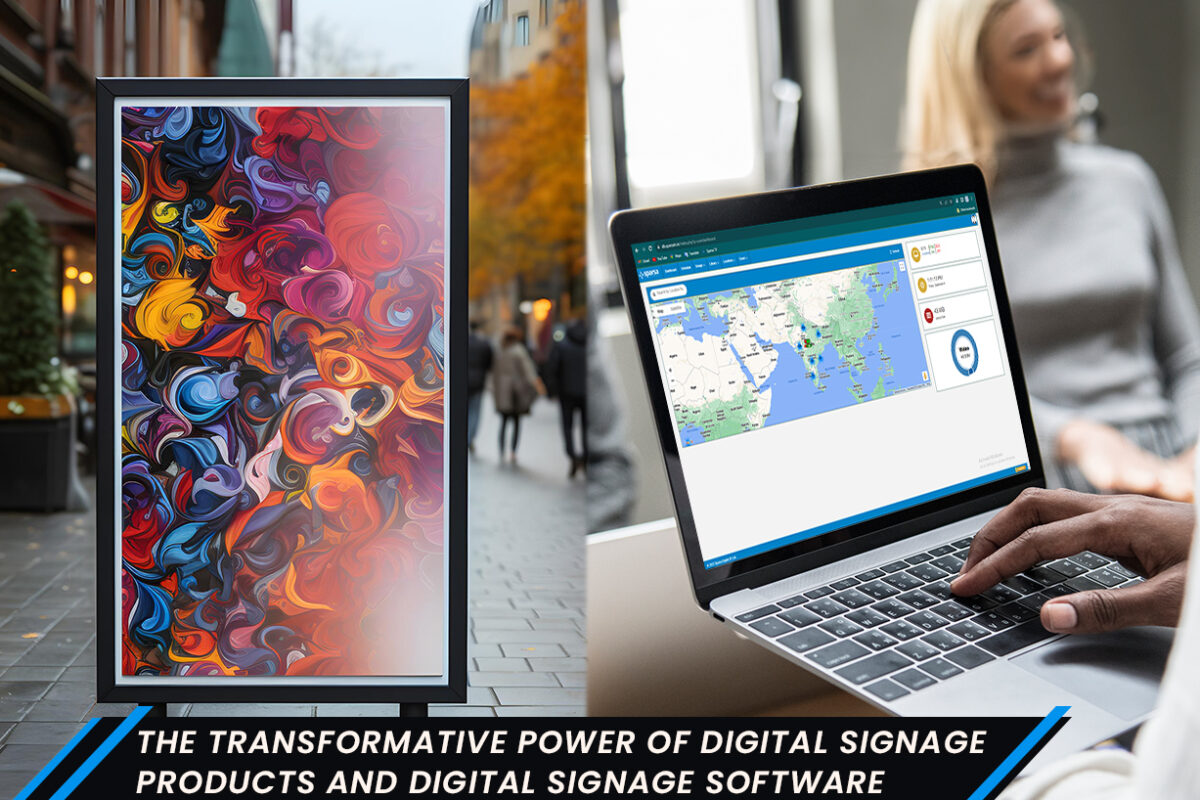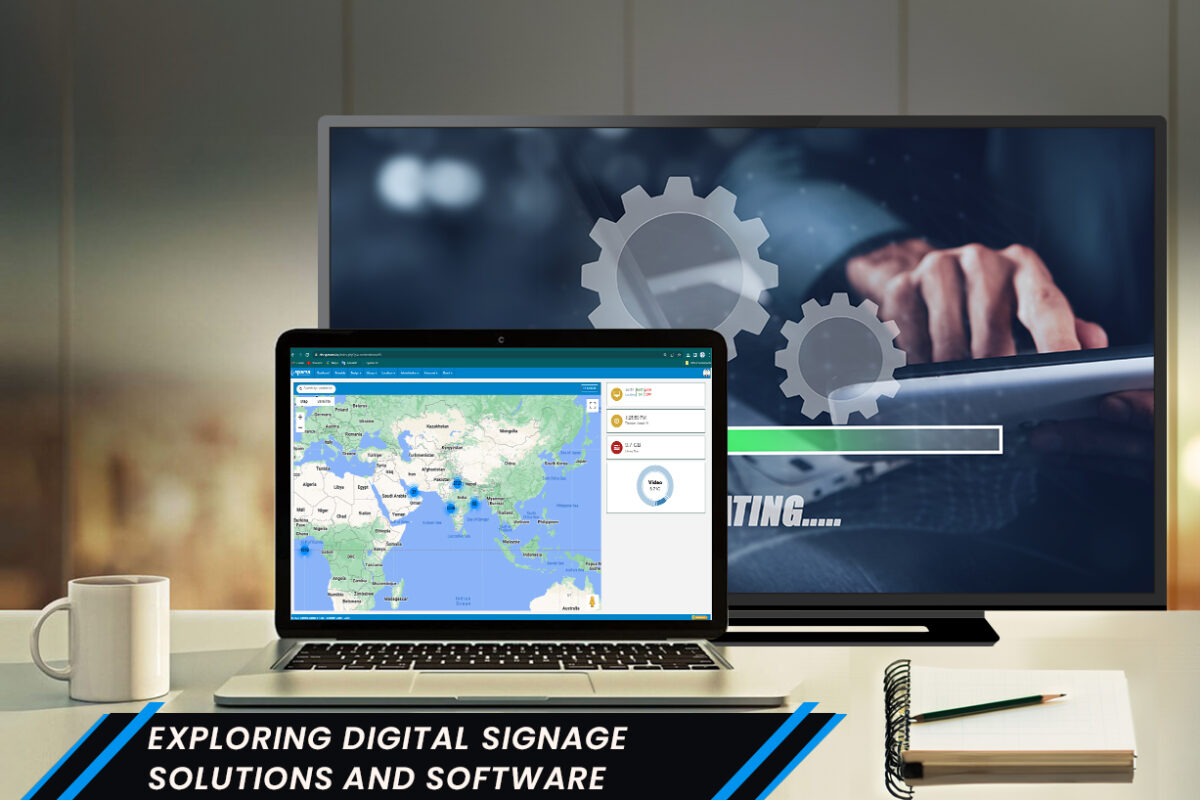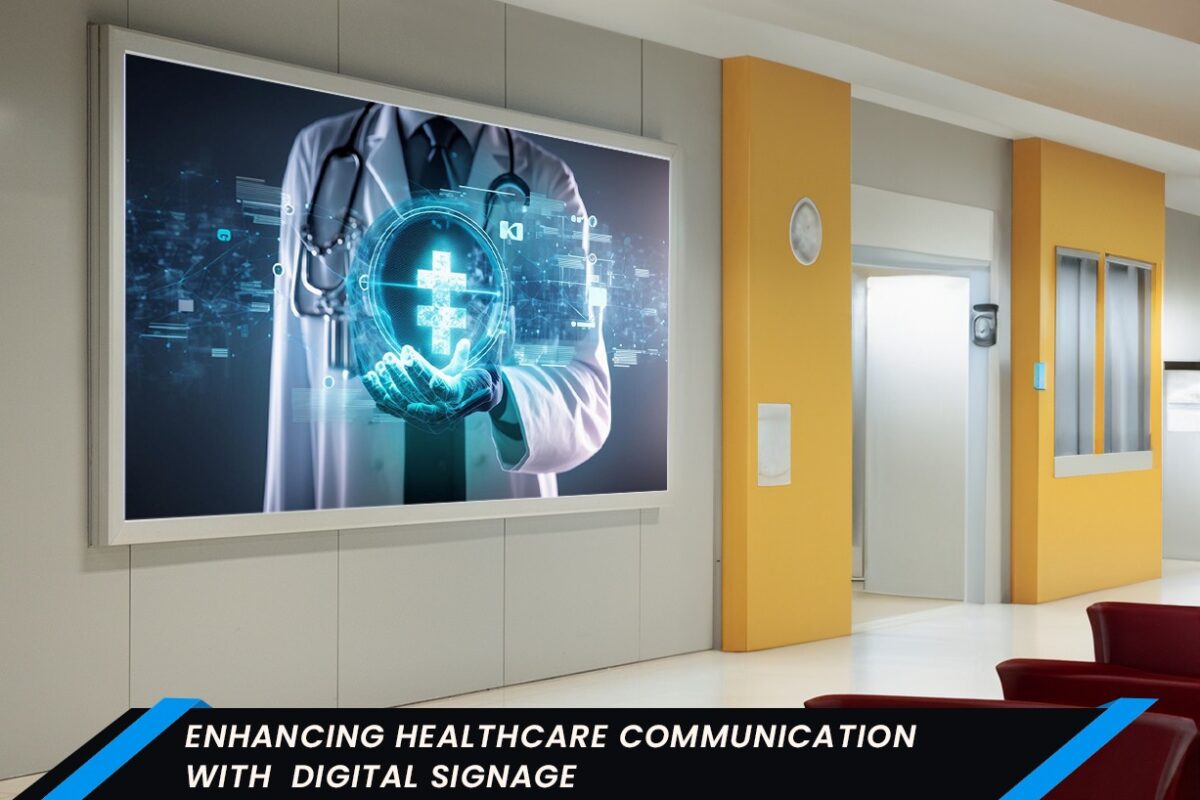In today’s fast-paced world, capturing and retaining audience attention is becoming increasingly challenging. Businesses, organizations, and institutions are constantly seeking innovative ways to communicate their messages effectively. Digital signage has emerged as a powerful tool in this regard, offering dynamic, engaging, and customizable displays to reach target audiences. In this blog, we delve into the realm of digital signage solutions and software, exploring their functionalities, benefits, and best practices.
Understanding Digital Signage Solutions
Digital signage refers to the use of digital displays to convey information, advertisements, or messages to a specific audience. These displays can range from simple screens to complex multimedia installations, strategically placed in various locations such as retail stores, corporate offices, educational institutions, transportation hubs, and public spaces.
Types of Digital Signage Displays
a. LED/LCD Screens: Traditional digital signage displays, commonly used for indoor and outdoor applications. LED displays offer high brightness and excellent visibility even in bright ambient light conditions.
b. Interactive Kiosks: Touch-enabled displays that allow users to interact with content, providing an immersive and engaging experience. Interactive kiosks are popular in retail settings, museums, and educational institutions.
c. Video Walls: Configurations of multiple screens arranged in a grid pattern to create a large, seamless display. Video walls are effective for grabbing attention in high-traffic areas and delivering impactful visual content.
Key Components of Digital Signage Solutions
a. Content Management System (CMS): A centralized platform for creating, scheduling, and managing content across digital signage displays. CMS allows users to upload multimedia content, design layouts, and schedule playback according to predefined criteria.
b. Media Players: Hardware devices that decode and display content on digital signage screens. Media players come in various forms, including dedicated hardware appliances, PC-based solutions, and System-on-Chip (SoC) displays with built-in playback capabilities.
c. Connectivity and Networking: Digital signage systems rely on robust network infrastructure to deliver content reliably to remote displays. Wired and wireless connectivity options facilitate seamless communication between the CMS, media players, and displays.
Benefits of Digital Signage Solutions
Enhanced Engagement: Dynamic and visually appealing content captures audience attention more effectively than static signage, increasing engagement and message retention.
Flexibility and Scalability: Digital signage solutions offer unparalleled flexibility to update content in real-time, allowing organizations to adapt messaging quickly to changing needs or circumstances. Additionally, these systems are easily scalable, enabling the expansion of signage networks as required.
Targeted Messaging: With the ability to schedule content based on time of day, location, or audience demographics, digital signage allows for highly targeted messaging. This personalized approach enhances relevance and effectiveness, leading to improved outcomes.
Cost Efficiency: While initial setup costs may be higher than traditional signage methods, digital signage solutions offer long-term cost savings by eliminating printing and distribution expenses associated with static signage. Moreover, the ability to repurpose content reduces content creation costs over time.
Exploring Digital Signage Software
Digital signage software serves as the backbone of any digital signage deployment, facilitating content creation, management, and distribution across the signage network. Let’s examine some of the key features and functionalities offered by digital signage software:
Content Creation and Management:
a. Template Design Tools: Intuitive drag-and-drop interfaces allow users to create visually stunning layouts without the need for advanced design skills. Pre-designed templates streamline the content creation process, ensuring consistency and brand adherence.
b. Multimedia Support: Digital signage software supports a wide range of media formats, including images, videos, audio files, and interactive HTML5 content. This versatility enables users to deliver rich, immersive experiences to their audience.
c. Content Scheduling: Advanced scheduling capabilities enable users to plan content playback based on specific dates, times, or recurring schedules. Content playlists can be created and updated effortlessly, ensuring seamless transitions between different messages.
Audience Analytics and Reporting:
a. Real-Time Monitoring: Digital signage software provides insights into display performance, including uptime, connectivity status, and playback statistics. Real-time monitoring allows operators to identify and address issues promptly, ensuring uninterrupted service.
b. Audience Analytics: Some digital signage platforms offer built-in analytics tools to track audience engagement metrics such as dwell time, interaction frequency, and demographic data. These insights help optimize content strategy and measure the effectiveness of campaigns.
Remote Management and Control:
a. Centralized Administration: Cloud-based digital signage software enables remote management of signage networks from anywhere with an internet connection. Administrators can update content, configure settings, and monitor displays from a single dashboard.
b. Role-Based Access Control: Granular user permissions ensure that only authorized personnel can make changes to the digital signage system. Role-based access control enhances security and accountability, reducing the risk of unauthorized modifications.
Best Practices for Digital Signage Deployment
- Define Clear Objectives: Before implementing a digital signage solution, establish clear goals and objectives aligned with your organization’s overall strategy. Whether it’s increasing sales, enhancing brand awareness, or improving internal communication, clarity of purpose is essential for success.
- Know Your Audience: Conduct audience research to understand the demographics, preferences, and behaviors of your target audience. Tailor content accordingly to resonate with your audience and maximize engagement.
- Optimize Content for Digital Displays: Design content with digital signage in mind, considering factors such as screen size, resolution, and viewing distance. Use high-quality images, legible fonts, and concise messaging to ensure optimal readability and impact.
- Test and Iterate: Continuously monitor performance metrics and gather feedback from users to refine your digital signage strategy. A data-driven approach allows for iterative improvements and optimization over time.
Conclusion
Digital signage solutions offer a dynamic and versatile platform for communication, advertising, and engagement in diverse settings. By leveraging advanced software tools and strategic deployment strategies, organizations can create immersive experiences that captivate audiences and drive desired outcomes. Whether in retail environments, corporate offices, or public spaces, digital signage has the power to transform static messages into dynamic conversations, fostering meaningful connections in an increasingly digital world.





